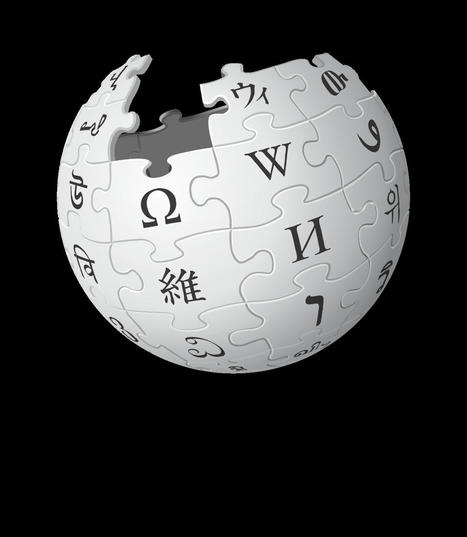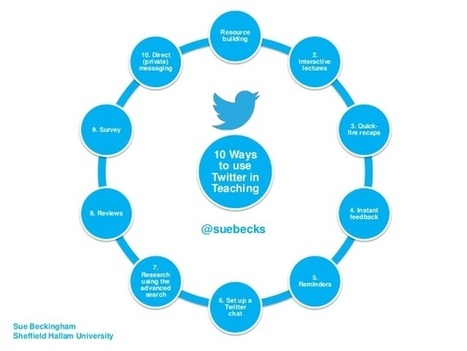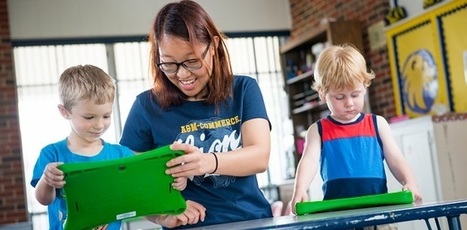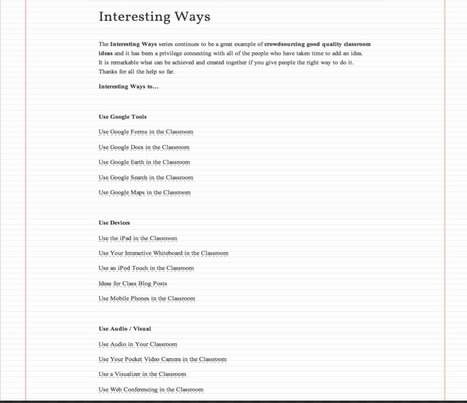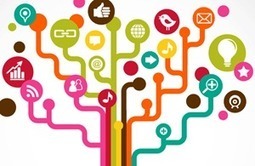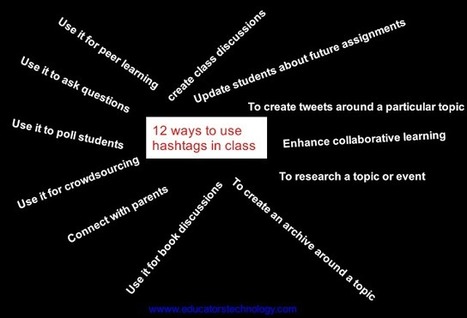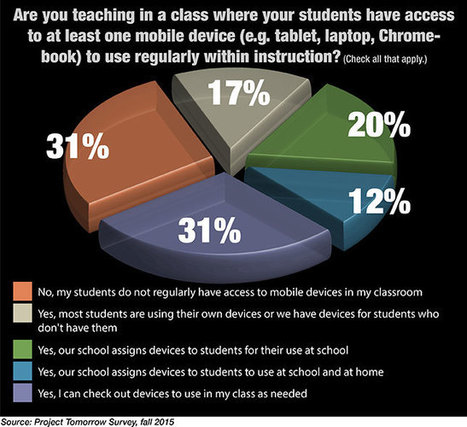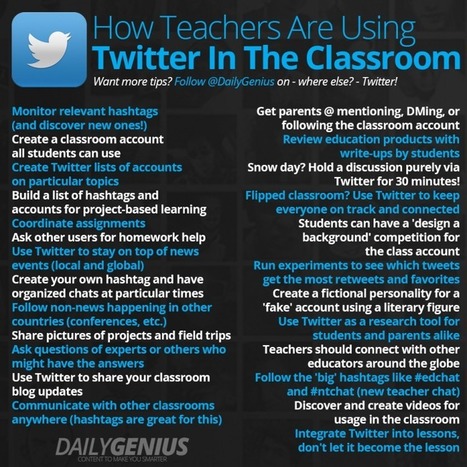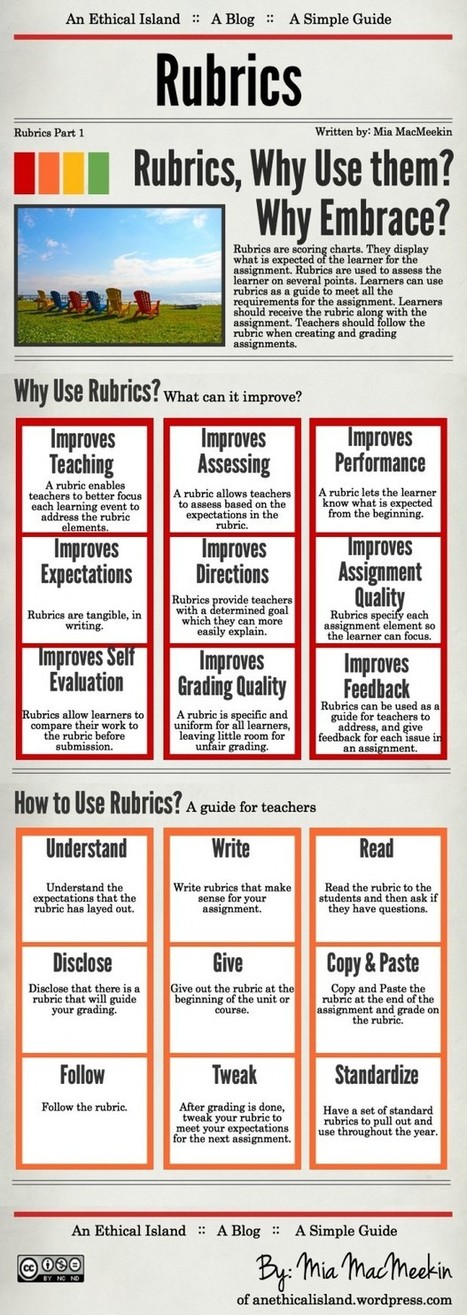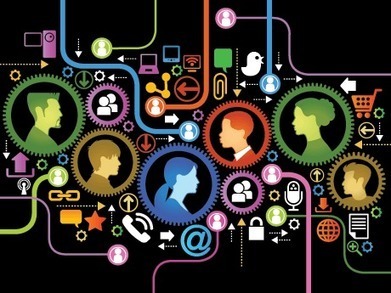Using Wikipedia in the classroom has been shunned traditionally by some teachers because it is written by volunteers on the internet. But it is precisely that crowdsourced nature that makes Wikipedia such a compelling tool in the classroom, says Nichole Saad, senior program manager for education at Wikimedia Foundation, the nonprofit that owns Wikipedia.
Get Started for FREE
Sign up with Facebook Sign up with X
I don't have a Facebook or a X account
 Your new post is loading... Your new post is loading...
 Your new post is loading... Your new post is loading...
|
marissa goldberg's curator insight,
November 24, 2014 1:11 PM
*Social media* Some teachers might think that twitter is the last tool that they would use in their classroom, but dailygenius.com is looking to change the mind of educators everywhere and show that twitter can be a true educational resource. In "25 top ways teachers use Twitter in the classroom" author Jeff Dunn presents his infographic that teaches progressive learning from this microblogging site. I am going to go over a few of his ideas and why I think they could be useful in day to day teaching. The very first item on the list is "monitor relevant hashtags" This can be extremely educational as modern news has been known to break on twitter. Even president Obama has used twitter's trending topics feature to tweet updates from the white house. Not only can the kids learn about what is going on in the world but they can see it happening in real time because twitter updates every second. Dunn also wants kids to use hashtags for project based learning which is relevant because these days kids get their research from social media, they can get quotes from industry professionals as well as ask questions to those who may have answers for their project. It makes communication seamless. English teachers can use twitter by making a fake account for a literary figure for example: @EdgarAllanPoe can use twitter to talk about his life and his poetry which creates a relatable resource for children to learn. Even on days off or snow days teachers can have remote conversations with their students through a class twitter account. This instant communication allows students to connect with their peers and with the teacher from anywhere in the world. From a marketers perspective this generates traffic for twitter as well as brands who want to promote on twitter. Using social media as an education tool expands the use of your brand (twitter) and keeps you relevant in today's constantly updating and changing world.

Maria Richards's curator insight,
March 17, 2014 6:44 AM
are you moving forward with the 21st century?

Mary Reilley Clark's curator insight,
February 22, 2014 12:55 PM
This is comprehensive and amazing, which is no surprise, because it's from Joyce Valenza! |




